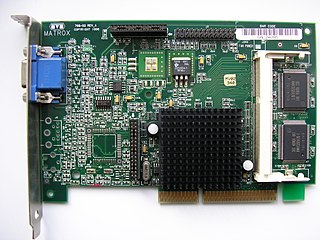Gallery
- A texture atlas for a video game
- A texture atlas of glyphs
- Sprite sheet for the video game Blades of Exile
In computer graphics, a texture atlas (also called a spritesheet or an image sprite in 2D game development) is an image containing multiple smaller images, usually packed together to reduce overall dimensions. [1] An atlas can consist of uniformly-sized images or images of varying dimensions. [1] A sub-image is drawn using custom texture coordinates to pick it out of the atlas.
In an application where many small textures are used frequently, it is often more efficient to store the textures in a texture atlas which is treated as a single unit by the graphics hardware. This reduces both the disk I/O overhead and the overhead of a context switch by increasing memory locality. Careful alignment may be needed to avoid bleeding between sub textures when used with mipmapping and texture compression.
In web development, images are packed into a sprite sheet to reduce the number of image resources that need to be fetched in order to display a page. [2]

OpenGL is a cross-language, cross-platform application programming interface (API) for rendering 2D and 3D vector graphics. The API is typically used to interact with a graphics processing unit (GPU), to achieve hardware-accelerated rendering.

A graphics card is a computer expansion card that generates a feed of graphics output to a display device such as a monitor. Graphics cards are sometimes called discrete or dedicated graphics cards to emphasize their distinction to an integrated graphics processor on the motherboard or the central processing unit (CPU). A graphics processing unit (GPU) that performs the necessary computations is the main component in a graphics card, but the acronym "GPU" is sometimes also used to erroneously refer to the graphics card as a whole.

Texture mapping is a method for mapping a texture on a computer-generated graphic. Texture here can be high frequency detail, surface texture, or color.

3dfx Interactive, Inc. was an American computer hardware company headquartered in San Jose, California, founded in 1994, that specialized in the manufacturing of 3D graphics processing units, and later, video cards. It was a pioneer in the field from the late 1990s to 2000.

A graphics processing unit (GPU) is a specialized electronic circuit initially designed to accelerate computer graphics and image processing. After their initial design, GPUs were found to be useful for non-graphic calculations involving embarrassingly parallel problems due to their parallel structure. Other non-graphical uses include the training of neural networks and cryptocurrency mining.

The RIVA 128, or "NV3", was a consumer graphics processing unit created in 1997 by Nvidia. It was the first to integrate 3D acceleration in addition to traditional 2D and video acceleration. Its name is an acronym for Real-time Interactive Video and Animation accelerator.
2.5D perspective refers to gameplay or movement in a video game or virtual reality environment that is restricted to a two-dimensional (2D) plane with little or no access to a third dimension in a space that otherwise appears to be three-dimensional and is often simulated and rendered in a 3D digital environment.
In computing, D3DX is a high level API library which is written to supplement Microsoft's Direct3D graphics API. The D3DX library was introduced in Direct3D 7, and subsequently was improved in Direct3D 9. It provides classes for common calculations on vectors, matrices and colors, calculating look-at and projection matrices, spline interpolations, and several more complicated tasks, such as compiling or assembling shaders used for 3D graphic programming, compressed skeletal animation storage and matrix stacks. There are several functions that provide complex operations over 3D meshes like tangent-space computation, mesh simplification, precomputed radiance transfer, optimizing for vertex cache friendliness and strip reordering, and generators for 3D text meshes. 2D features include classes for drawing screen-space lines, text and sprite based particle systems. Spatial functions include various intersection routines, conversion from/to barycentric coordinates and bounding box and sphere generators.

In computer graphics, a shader is a computer program that calculates the appropriate levels of light, darkness, and color during the rendering of a 3D scene—a process known as shading. Shaders have evolved to perform a variety of specialized functions in computer graphics special effects and video post-processing, as well as general-purpose computing on graphics processing units.

A lightmap is a data structure used in lightmapping, a form of surface caching in which the brightness of surfaces in a virtual scene is pre-calculated and stored in texture maps for later use. Lightmaps are most commonly applied to static objects in applications that use real-time 3D computer graphics, such as video games, in order to provide lighting effects such as global illumination at a relatively low computational cost.

Real-time computer graphics or real-time rendering is the sub-field of computer graphics focused on producing and analyzing images in real time. The term can refer to anything from rendering an application's graphical user interface (GUI) to real-time image analysis, but is most often used in reference to interactive 3D computer graphics, typically using a graphics processing unit (GPU). One example of this concept is a video game that rapidly renders changing 3D environments to produce an illusion of motion.

A free and open-source graphics device driver is a software stack which controls computer-graphics hardware and supports graphics-rendering application programming interfaces (APIs) and is released under a free and open-source software license. Graphics device drivers are written for specific hardware to work within a specific operating system kernel and to support a range of APIs used by applications to access the graphics hardware. They may also control output to the display if the display driver is part of the graphics hardware. Most free and open-source graphics device drivers are developed by the Mesa project. The driver is made up of a compiler, a rendering API, and software which manages access to the graphics hardware.

The G200 is a 2D, 3D, and video accelerator chip for personal computers designed by Matrox. It was released in 1998.

Compute Unified Device Architecture (CUDA) is a parallel computing platform and application programming interface (API) that allows software to use certain types of graphics processing units (GPUs) for accelerated general-purpose processing, an approach called general-purpose computing on GPUs (GPGPU). CUDA API and its runtime: The CUDA API is an extension of the C programming language that adds the ability to specify thread-level parallelism in C and also to specify GPU device specific operations (like moving data between the CPU and the GPU). CUDA is a software layer that gives direct access to the GPU's virtual instruction set and parallel computational elements for the execution of compute kernels. In addition to drivers and runtime kernels, the CUDA platform includes compilers, libraries and developer tools to help programmers accelerate their applications.

3D computer graphics, sometimes called CGI, 3-D-CGI or three-dimensional computer graphics, are graphics that use a three-dimensional representation of geometric data that is stored in the computer for the purposes of performing calculations and rendering digital images, usually 2D images but sometimes 3D images. The resulting images may be stored for viewing later or displayed in real time.

Computer graphics deals with by generating images and art with the aid of computers. Today, computer graphics is a core technology in digital photography, film, video games, digital art, cell phone and computer displays, and many specialized applications. A great deal of specialized hardware and software has been developed, with the displays of most devices being driven by computer graphics hardware. It is a vast and recently developed area of computer science. The phrase was coined in 1960 by computer graphics researchers Verne Hudson and William Fetter of Boeing. It is often abbreviated as CG, or typically in the context of film as computer generated imagery (CGI). The non-artistic aspects of computer graphics are the subject of computer science research.
A variety of computer graphic techniques have been used to display video game content throughout the history of video games. The predominance of individual techniques have evolved over time, primarily due to hardware advances and restrictions such as the processing power of central or graphics processing units.

The GeForce 600 series is a series of graphics processing units developed by Nvidia, first released in 2012. It served as the introduction of the Kepler architecture. It is succeeded by the GeForce 700 series.

Simple and Fast Multimedia Library (SFML) is a cross-platform software development library designed to provide a simple application programming interface (API) to various multimedia components in computers. It is written in C++ with bindings available for Ada, C, Crystal, D, Euphoria, Go, Java, Julia, .NET, Nim, OCaml, Python, Ruby, and Rust. Experimental mobile ports were made available for Android and iOS with the release of SFML 2.2.
This is a glossary of terms relating to computer graphics.